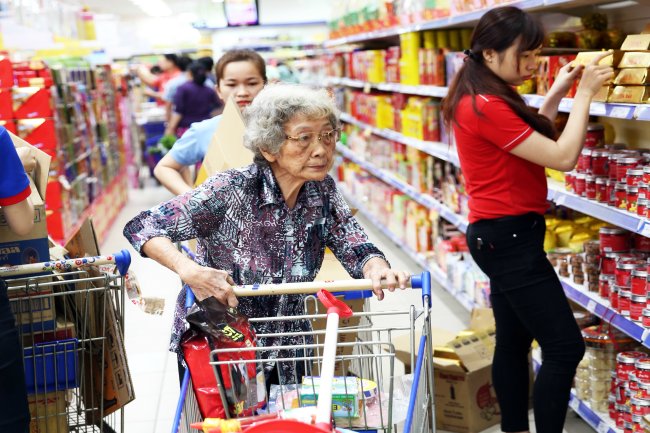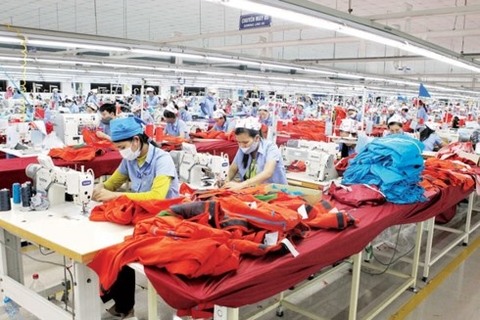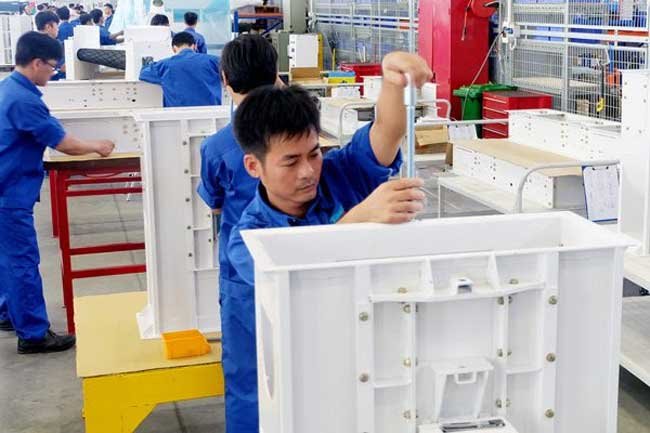No reason for excessive fuss about 2019 inflation
No reason for excessive fuss about 2019 inflation
Given forecasts of world oil prices and supply in 2019, some domestic economic research organizations have said the inflationary pressure may not be too high this year

In the last two months of 2018, the “opportune” U-turn of fuel prices played a key role in suppressing the price hikes of the majority of commodities, particularly those of cereals and processed foods.
2018: Fuel price falls play the key role
The consumer price index (CPI) last December was 0.25% lower than in November 2018. Such a rare phenomenon broke the annual rule that prices would spike in the last months of the year.
At the end of 2018, the average CPI increased by 3.54% compared with that of 2017, reaching the 4% target set by the Government. However, compared with December 2017, the rate was rather low, at 2.98%.
A review of the entire 2018 would indicate that inflation was at its peak in late Q2 and early Q3 due to the skyrocketing price of pork which soared by 10.37% during the period and increased the overall CPI by 0.44%.
The hikes in prices of two groups of services under the State control—health care and education—continued their increasing streak as per the approved schemes. As regards health care services, the local authorities concerned revised up the prices of health care services and diagnoses in line with Circular 02/2017/TT-BYT and Circular 38/TT-BYT, boosting health care prices by 13.86% and the overall CPI by 0.54%.
In the meantime, the continued implementation of Decree 86/2015/ND-CP pushed up prices in the educational sector in 2018 by 7.12% over the previous year and the overall CPI by 0.37%. Furthermore, the increase in region-based minimal wages applicable to workers at enterprises effective as of January 1, 2018 and the basic salary applicable to State employees and military personnel effective as of July 1, 2018 boosted the average prices of several services such as repair of household utensils, house maintenance, and power and water services by 3-5% compared with the previous year.
Yet since the second half of Q4, the plunging world oil price, down by almost 40% from its peak, had helped mitigate the risk of high inflation. On October 6, 2018, the gasoline price reached the year’s highest level at VND22,347 per liter of RON95 and VND20,906 per liter of E5. After climbing to its peak, domestic fuel prices began to go downhill till the end of the year. Before a cut of VND500 per liter on the first day of 2019, domestic fuel prices had undergone 24 revisions. Overall in 2018, the gasoline price dropped by VND1,000 per liter while the diesel oil price increased at the same amount. The opportune price drop played a key role in suppressing the price hikes of the majority of commodities, particularly those of cereals and processed foods.
2019: Risks not that high
In accordance with the target approved by lawmakers, the average CPI in 2019 would be more or less 4%. There is a change in the wording when the phrase used for the 2018 CPI target, “below the 4% mark,” has been replaced by “more or less 4%” for this year’s target. Simply put, the requirement has been slightly relaxed.
However, please bear in mind that the 4% mark was passed by the National Assembly in early last October, when the global oil price was soaring (some sources even said the Brent oil price might reach US$100 per barrel in 2019). That means the target set was a little bit easier, creating a “buffer zone” which might help the Government better cope with unpredictable inflationary effects.
In fact, the world economy has changed extensively ever since, especially the oil price hike in the context of a receding global growth in 2019. What’s more, the oil supply may even increase in the presence of U.S. shale oil. In such a context, a host of domestic economic research organizations have reduced Vietnam’s inflationary expectation in 2019.
In its annual strategic report released recently, Bao Viet Securities Company (BVSC) projected Vietnam’s average inflation rate would be equivalent to that of 2018, more or less 3.5%—lower than the 4% mark approved by lawmakers. According to BVSC, the revision of groups of commodities and services under the State control would boost the overall inflation rate by 1%. BVSC also set up a quantitative model for inflation forecast based on three scenarios of the average Brent oil price (at about US$70 per barrel), which projects Vietnam’s 2019 inflation at some 3.5%.
In addition, viewed from the monetary perspective, the inflationary pressure this year would not be too high as credit growth and money supply (M2) in recent years have been relatively stable and not been too high, from 14% to 17%, at rate considered appropriate to the current situation of the Vietnamese economy. These rates are believed to be able to prop the overall economic growth without mounting tremendous pressure on inflation, a risk similar to what happened in the 2007-2011 period.
















